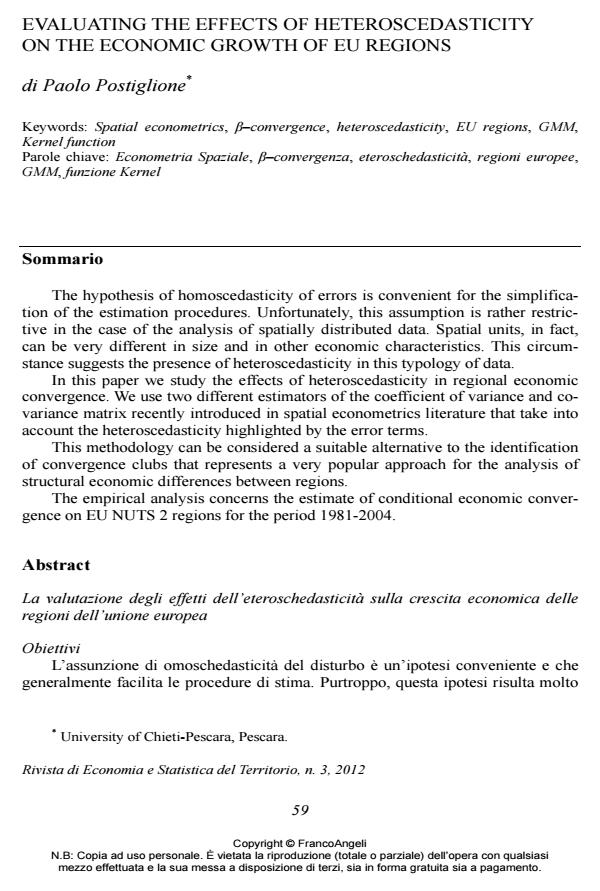Evaluating the effects of heteroscedasticity on the economic growth of EU regions
Journal title RIVISTA DI ECONOMIA E STATISTICA DEL TERRITORIO
Author/s Paolo Postiglione
Publishing Year 2012 Issue 2012/3
Language English Pages 19 P. 59-77 File size 852 KB
DOI 10.3280/REST2012-003004
DOI is like a bar code for intellectual property: to have more infomation
click here
Below, you can see the article first page
If you want to buy this article in PDF format, you can do it, following the instructions to buy download credits

FrancoAngeli is member of Publishers International Linking Association, Inc (PILA), a not-for-profit association which run the CrossRef service enabling links to and from online scholarly content.
The hypothesis of homoscedasticity of errors is convenient for the simplification of the estimation procedures. Unfortunately, this assumption is rather restrictive in the case of the analysis of spatially distributed data. Spatial units, in fact, can be very different in size and in other economic characteristics. This circumstance suggests the presence of heteroscedasticity in this typology of data. In this paper we study the effects of heteroscedasticity in regional economic convergence. We use two different estimators of the coefficient of variance and covariance matrix recently introduced in spatial econometrics literature that take into account the heteroscedasticity highlighted by the error terms. This methodology can be considered a suitable alternative to the identification of convergence clubs that represents a very popular approach for the analysis of structural economic differences between regions. The empirical analysis concerns the estimate of conditional economic convergence on EU NUTS 2 regions for the period 1981-2004.
Keywords: Spatial econometrics, B-convergence, heteroscedasticity, EU regions, GMM, Kernel function
Jel codes: C21; C26; R11; R12
Paolo Postiglione, Evaluating the effects of heteroscedasticity on the economic growth of EU regions in "RIVISTA DI ECONOMIA E STATISTICA DEL TERRITORIO" 3/2012, pp 59-77, DOI: 10.3280/REST2012-003004